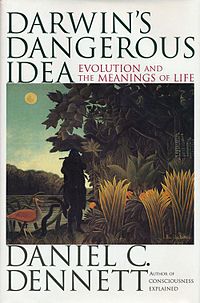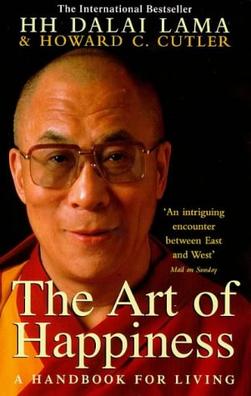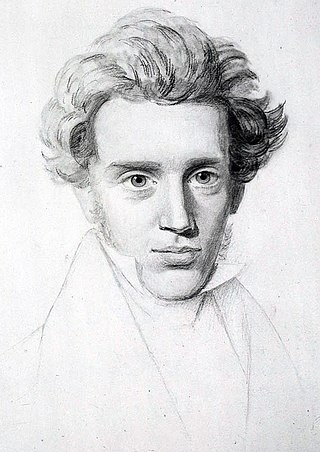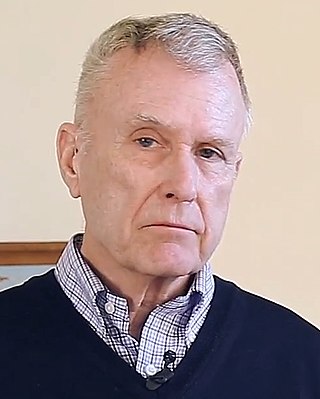
Darwin's Dangerous Idea: Evolution and the Meanings of Life is a 1995 book by the philosopher Daniel Dennett, in which the author looks at some of the repercussions of Darwinian theory. The crux of the argument is that, whether or not Darwin's theories are overturned, there is no going back from the dangerous idea that design might not need a designer. Dennett makes this case on the basis that natural selection is a blind process, which is nevertheless sufficiently powerful to explain the evolution of life. Darwin's discovery was that the generation of life worked algorithmically, that processes behind it work in such a way that given these processes the results that they tend toward must be so.

Sherry Turkle is an American sociologist. She is the Abby Rockefeller Mauzé Professor of the Social Studies of Science and Technology at the Massachusetts Institute of Technology. She obtained a BA in social studies and later a PhD in sociology and personality psychology at Harvard University. She now focuses her research on psychoanalysis and human-technology interaction. She has written several books focusing on the psychology of human relationships with technology, especially in the realm of how people relate to computational objects. Her memoir 'Empathy Diaries' received excellent critical reviews.
An iconoclast is one who professes iconoclasm ; one who objects to the use of sacred images in religion, or who opposes orthodoxy and religion.

The Art of Happiness is a book by the 14th Dalai Lama and Howard Cutler, a psychiatrist who posed questions to the Dalai Lama. Cutler quotes the Dalai Lama at length, providing context and describing some details of the settings in which the interviews took place, as well as adding his own reflections on issues raised.
Intercultural communication is a discipline that studies communication across different cultures and social groups, or how culture affects communication. It describes the wide range of communication processes and problems that naturally appear within an organization or social context made up of individuals from different religious, social, ethnic, and educational backgrounds. In this sense, it seeks to understand how people from different countries and cultures act, communicate, and perceive the world around them. Intercultural communication focuses on the recognition and respect of those with cultural differences. The goal is mutual adaptation between two or more distinct cultures which leads to biculturalism/multiculturalism rather than complete assimilation. It promotes the development of cultural sensitivity and allows for empathic understanding across different cultures.

Active listening is the practice of preparing to listen, observing what verbal and non-verbal messages are being sent, and then providing appropriate feedback for the sake of showing attentiveness to the message being presented.
Cultural psychology is the study of how cultures reflect and shape their members' psychological processes.
The adaptive unconscious, first coined by social psychologist Daniel Wegner in 2002, is described as a set of mental processes that is able to affect judgement and decision-making, but is out of reach of the conscious mind. It is thought to be adaptive as it helps to keep the organism alive. Architecturally, the adaptive unconscious is said to be unreachable because it is buried in an unknown part of the brain. This type of thinking evolved earlier than the conscious mind, enabling the mind to transform information and think in ways that enhance an organism's survival. It can be described as a quick sizing up of the world which interprets information and decides how to act very quickly and outside the conscious view. The adaptive unconscious is active in everyday activities such as learning new material, detecting patterns, and filtering information. It is also characterized by being unconscious, unintentional, uncontrollable, and efficient without requiring cognitive tools. Lacking the need for cognitive tools does not make the adaptive unconscious any less useful than the conscious mind as the adaptive unconscious allows for processes like memory formation, physical balancing, language, learning, and some emotional and personalities processes that includes judgement, decision making, impression formation, evaluations, and goal pursuing. Despite being useful, the series of processes of the adaptive unconscious will not always result in accurate or correct decisions by the organism. The adaptive unconscious is affected by things like emotional reaction, estimations, and experience and is thus inclined to stereotyping and schema which can lead to inaccuracy in decision making. The adaptive conscious does however help decision making to eliminate cognitive biases such as prejudice because of its lack of cognitive tools.
Robert Kegan is an American developmental psychologist. He is a licensed psychologist and practicing therapist, lectures to professional and lay audiences, and consults in the area of professional development and organization development.

The philosophy of Søren Kierkegaard has been a major influence in the development of 20th-century philosophy, especially existentialism and postmodernism. Søren Kierkegaard was a 19th-century Danish philosopher who has been labeled by many as the "Father of Existentialism", although there are some in the field who express doubt in labeling him an existentialist to begin with. His philosophy also influenced the development of existential psychology.

Richard Eugene Nisbett is an American social psychologist and writer. He is the Theodore M. Newcomb Distinguished Professor of social psychology and co-director of the Culture and Cognition program at the University of Michigan at Ann Arbor. Nisbett's research interests are in social cognition, culture, social class, and aging. He received his Ph.D. from Columbia University, where his advisor was Stanley Schachter, whose other students at that time included Lee Ross and Judith Rodin.

What Is Your Dangerous Idea?: Today's Leading Thinkers on the Unthinkable is a book edited by John Brockman, which deals with "dangerous" ideas, or ideas that some people would react to in ways that suggest a disruption of morality and ethics. Scientists, philosophers, artists, and various other groups of people have written in to the online salon called the Edge, where thinkers in several areas post and discuss their ideas. This collection of responses forms the entirety of the book. The basic concept behind the book is "to gather a hundred of the most brilliant minds in the world in a room, lock them in, and have them ask each other the questions they were asking themselves".

The Big Picture series provides teachers and post-16 students with up-to-date information on research findings in biology and medicine, and the social and ethical implications of this research. Published by the Wellcome Trust as a free educational resource, each issue is available for free electronically. The website provides free resources for teachers and online activities for students, including lesson ideas, animations, image galleries and short videos. As of 2016, the print subscription has been discontinued and replaced with online only.

Martin Lindstrom (Lindstrøm) is a Danish author and Time magazine Influential 100 Honoree. He has written eight books including Small Data: The Tiny Clues that Uncover Huge Trends, Buyology – Truth and Lies About Why We Buy, Brandwashed – Tricks Companies Use to Manipulate Our Minds and Persuade Us to Buy, his first title written for consumers, for which Lindstrom conducted a $3 million word-of-mouth marketing experiment, and 2021 released The Ministry of Common Sense. Brandwashed was inspired by the 2009 film, The Joneses – to study the effects of social influence on purchasing decisions.

The Happiness Hypothesis: Finding Modern Truth in Ancient Wisdom is a 2006 book written by American social psychologist Jonathan Haidt. In it, Haidt poses several "Great Ideas" on happiness espoused by thinkers of the past—such as Plato, Buddha and Jesus—and examines them in the light of contemporary psychological research, extracting from them any lessons that still apply to our modern lives. Central to the book are the concepts of virtue, happiness, fulfillment, and meaning.
Gregory Scott Berns is an American neuroeconomist, neuroscientist, professor of psychiatry, and psychologist. He lives with his family in Atlanta, Georgia, US.

Now You See It: How the Brain Science of Attention Will Transform the Way We Live, Work, and Learn is a book by CUNY Graduate Center professor Cathy Davidson published by Viking Press on August 19, 2011.

The Obstacle Is the Way: The Timeless Art of Turning Trials into Triumph is the third book by author Ryan Holiday. It was published in 2014. It is a book which offers individuals a framework to flip obstacles into opportunities, an approach crafted by Holiday. It was inspired by the philosophy of stoicism.

Moran Cerf is an American-French-Israeli neuroscientist, professor of business, investor and former white hat hacker.

Management System (Open Source) is a socio-technical system that leverages the cumulative knowledge of management practitioners and evidenced based research from the past 130 years. The system was developed by DoD components in partnership with industry experts and academic researchers and builds off of the US Department of Wars version 1.0 open source management system - Training Within Industry.













